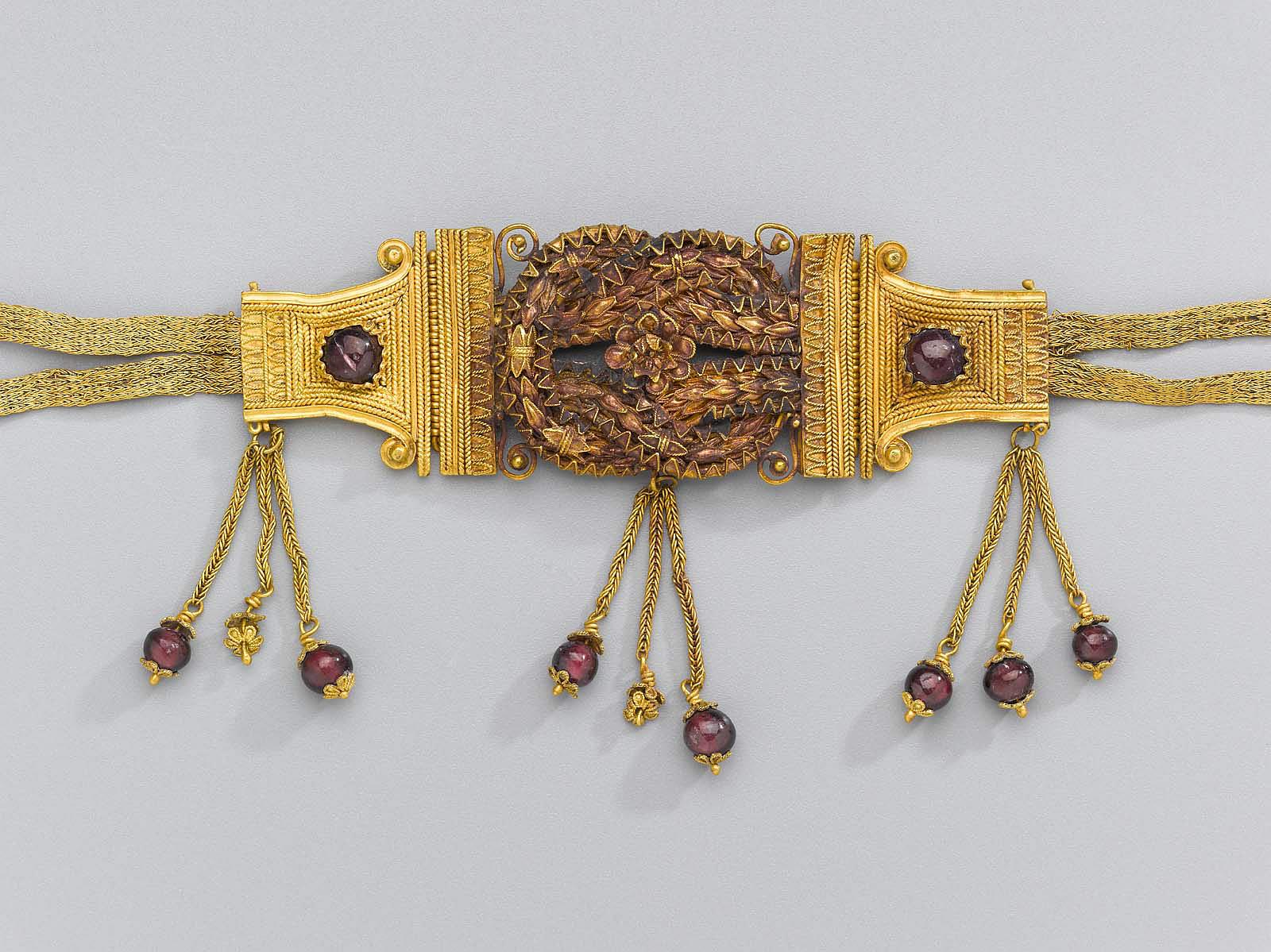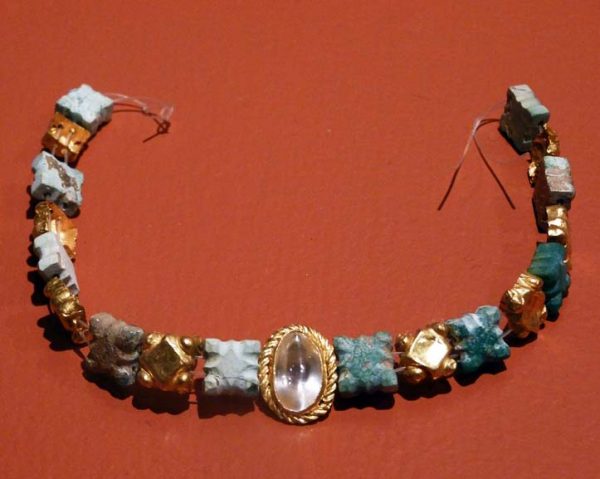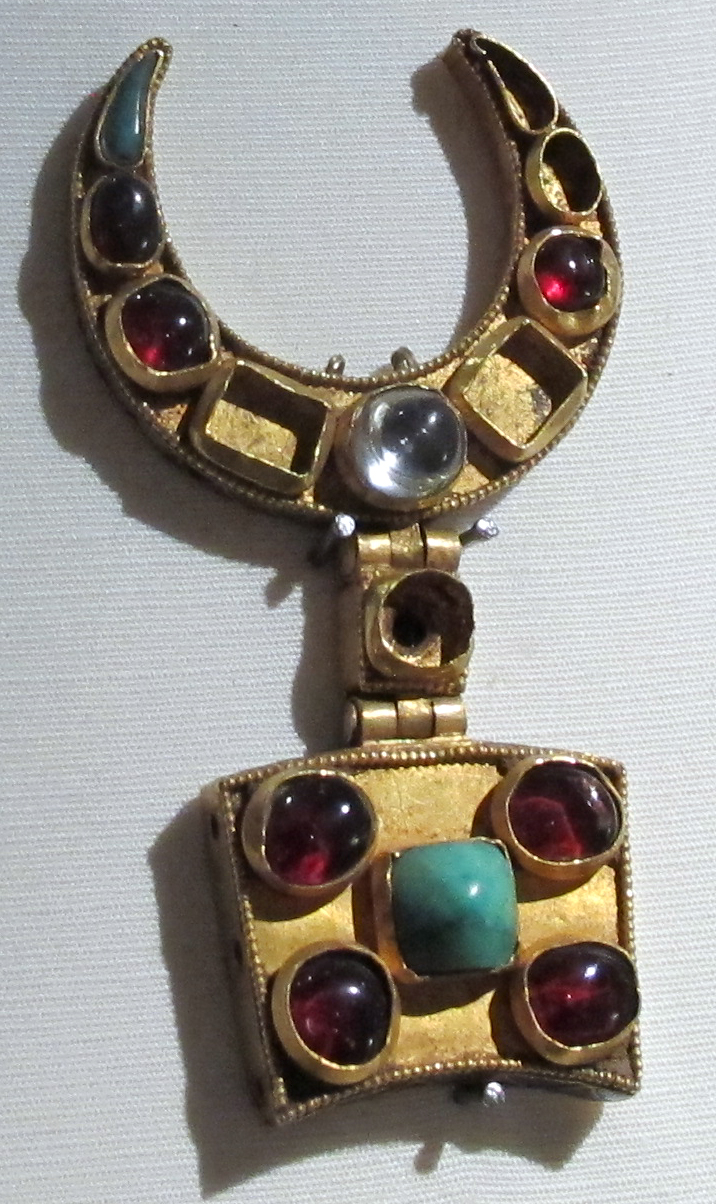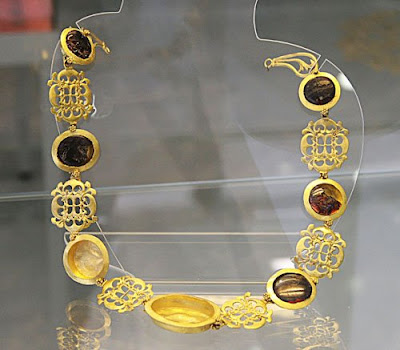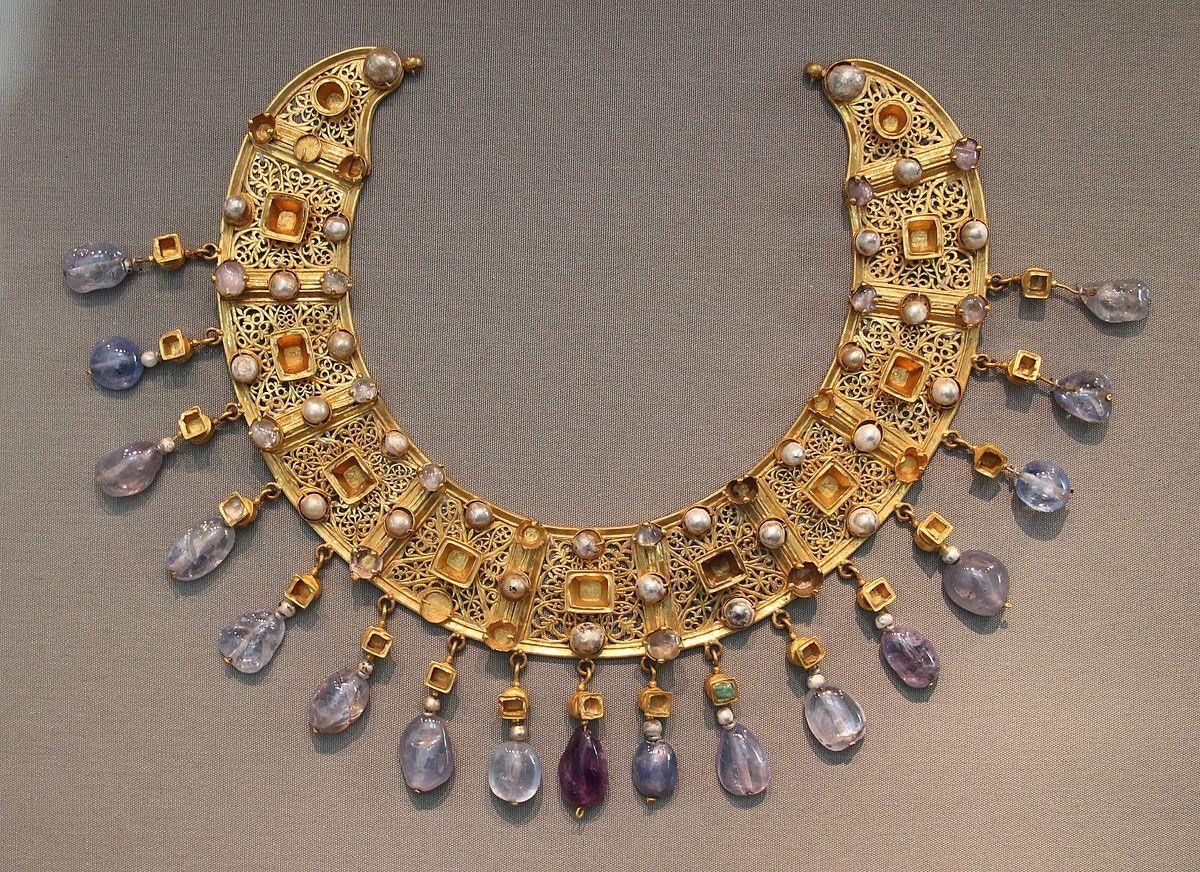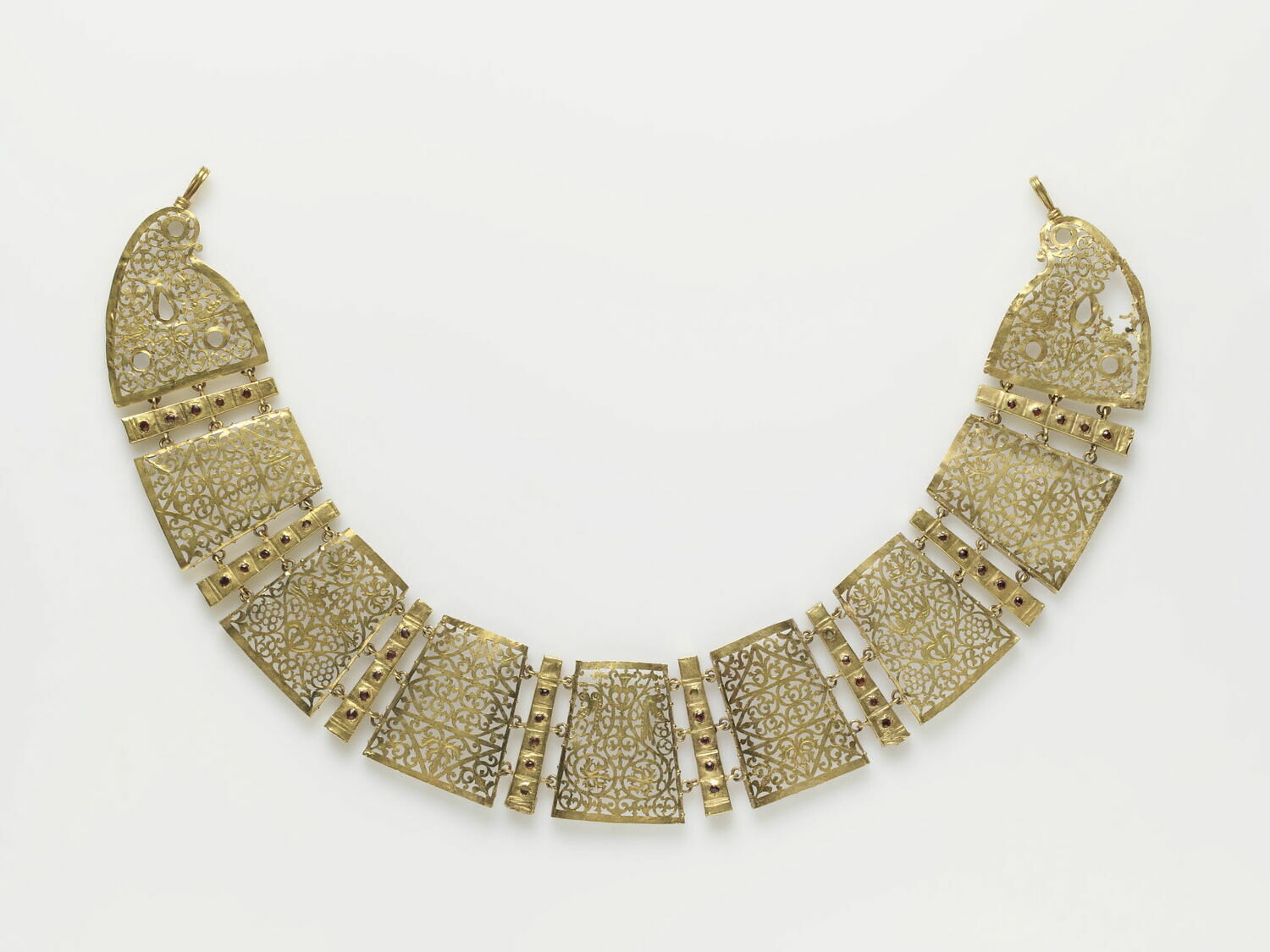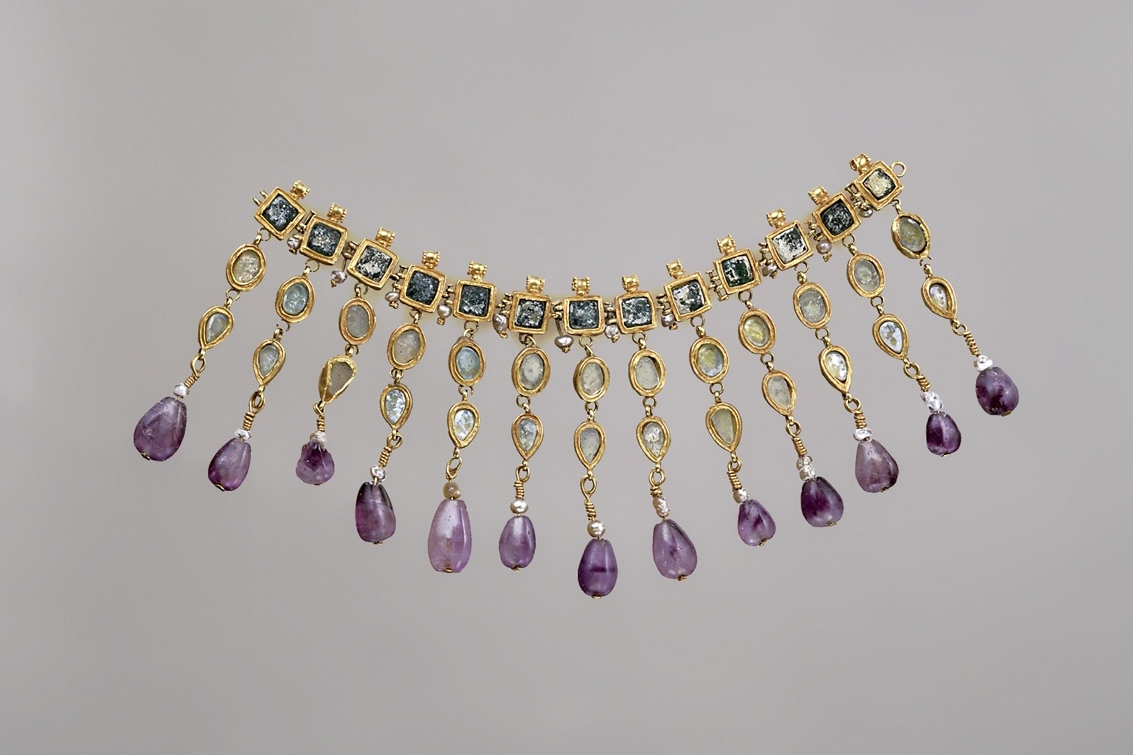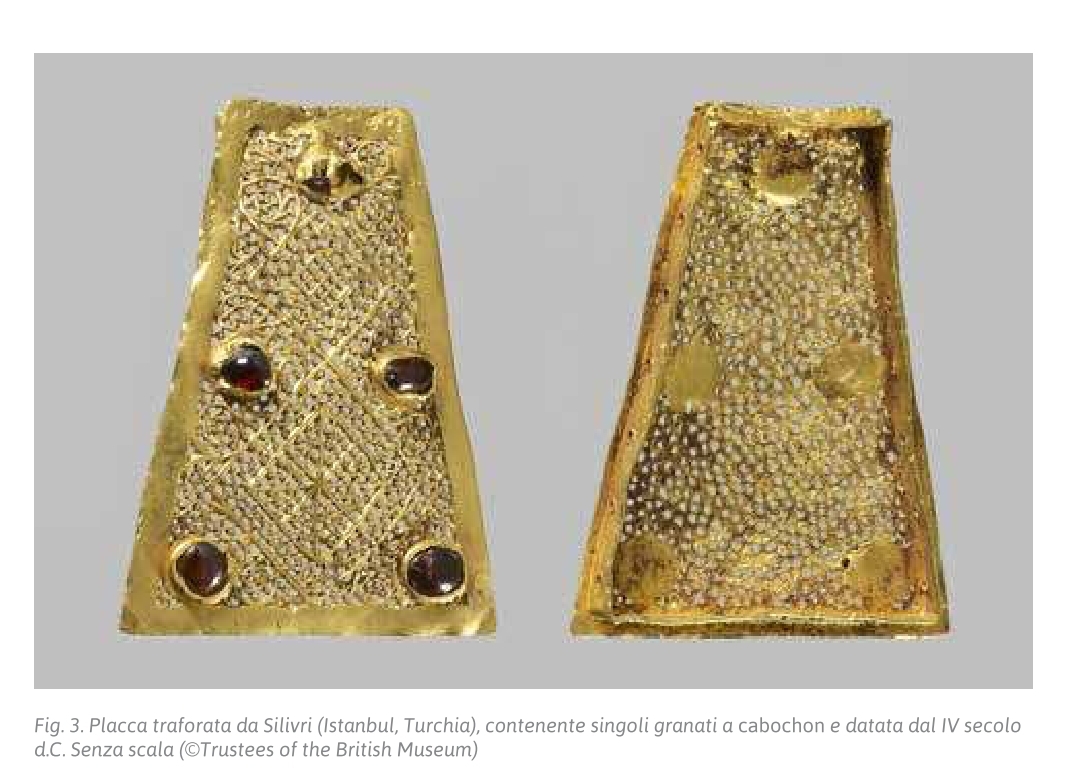This post is about segmented jewelry with a more or less known purpose, which could have been worn as a necklace, diadem (headband), or a headdress decoration like those from Hatra and Palmyra sculptured female portraits. Some of these jewels could, in my opinion, also be worn as different parts of an outfit, used as multifunctional jewelry.
This compilation is also intended to show various ways and techniques of combining decorative elements. We have examples from the Black Sea of using the same ornaments as jewelry and to decorate a horse’s harness.


This three-piece element is believed to have been part of the necklace. Its length is 5,5 cm, the parts are small, joined with hinges.
Roman, 2nd-3rd century, place of origin is not given.
“Three jewellery elements from a necklace, consisting of three oval boxed settings with small pearls at the corners, containing an amethyst, amethystine garnet and the other with a topaz, the setting with the topaz is joined to one of the amethyst settings.”
Rhayader Hoard, Roman Britain (Wales), 1st-2nd century. In the British Museum database shown in two separated records. There are 9 inlayed rectangular elements in total.

From the museum description: “Gold bracelet or neck ornament fragment, consisting of (…) quadrangular plates joined by pairs of hooks and eyes which are hidden by thin plates. Each of the large plates has a band of raised wirework and an oval setting for stones, two flat carnelians and two convex blue glass paste.”
Judging from the photo below, total length is about 30 cm, so it is definitely too long for a bracelet.
With such joining loops, additionally hidden under the connecting plates, it would be bad to arrange as a necklace. So maybe it was a diadem?

https://www.britishmuseum.org

4th century
http://colorsandstones.eu

The Astrakhan Museum-Reserve [read more]
“Necklaces of this kind were made in many centers, including Panticapaeum, Olbia, Chersonese, the cities of the Eastern Black Sea region, and were also common in Rome and the Roman provinces.”
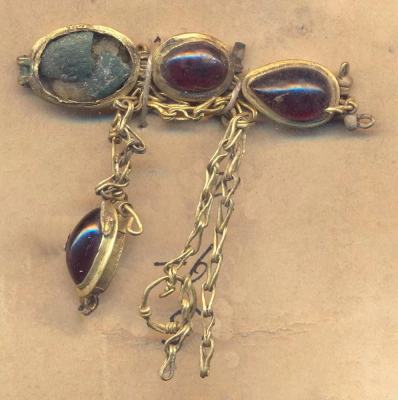
Gold, L: 5 cm
Taurida Province, Kerch, Crimea; burial mound near the Bavrov farmstead [хутор Бавров], from a stone sarcophagus
ГИМ 54746/12662

Photo: Osama Shukir Muhammed Amin

L. Y. RAHMANI

Read more >> https://colorsandstones.eu/2022/12/17/necklace-from-sarkamen-d-b/
The nicolo gemstones in jewelry and wall paintings from Trier
http://colorsandstones.eu/2021/11/05/the-nicolo-gemstones-in-jewelry-and-wall-paintings-from-trier/
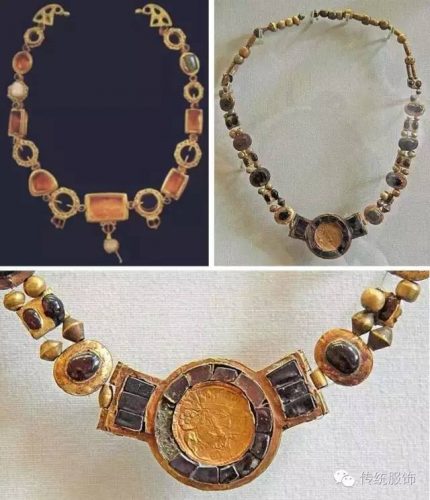

Μαργαριτάρια και πολύτιμοι λίθοι σε χρυσά κοσμήματα της Ύστερης αρχαιότητας και της Παλαιοχριστιανικής περιόδου
Pearls and precious stones in gold jewelry of the Late antiquity and the Early Christian period https://olympias.lib.uoi.gr/jspui/handle/123456789/36969

Inv. No. AO 21421 picture by Grégory Lejeune from flickr


Unearthed 1957 from the tomb of Li Jingxun, a nine years old girl. Jewelry was buried in the fourth year of Sui Daye (608 CE).
Now it is kept in the National Museum of China.
Li Jingxun was a granddaughter of the eldest sister of Emperor Yang of the Sui dynasty. More than 200 items were buried in her grave, among them pair of gem-studded gold bracelets and this rich necklace. [V. C. XIONG and E. J. LAING]
The necklace consists of 28 spherical ornaments with 10 pearls each. The elements are divided into two groups of 14 in each group. The balls are linked by a chain woven with gold wire. At the top of the two groups of golden ball chains, there is a square gold ornament (inlaid with red bloodstone). The carnelian is surrounded by 24 pearls. The left and right sides are connected to a square gold ornament with four inward curves, and blue bead ornaments are inlaid on it, and a heart-shaped blue bead ornament is hung on the bottom end.

Photo ©Dongmaiying

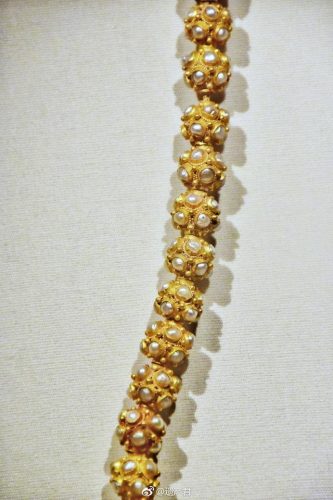
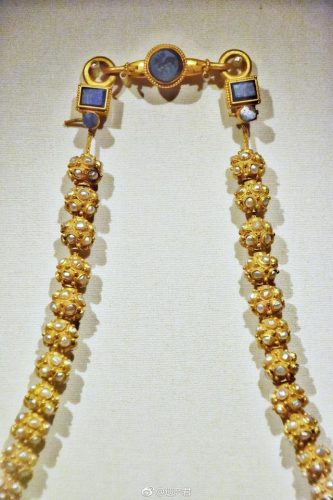
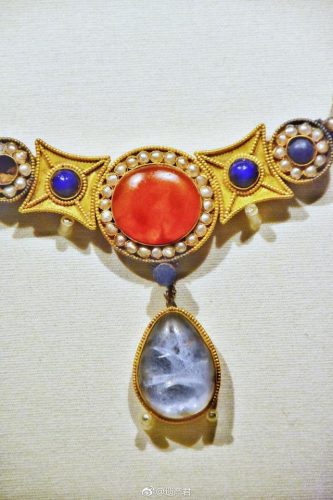
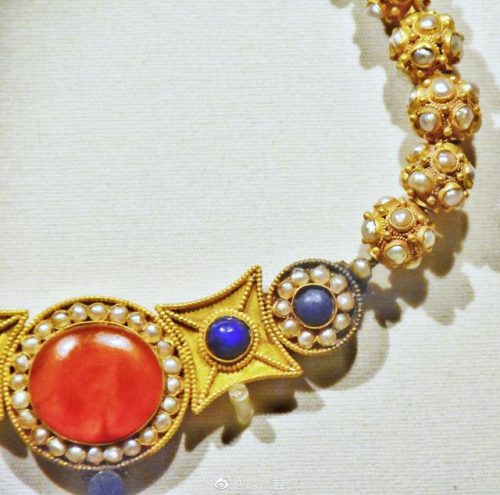
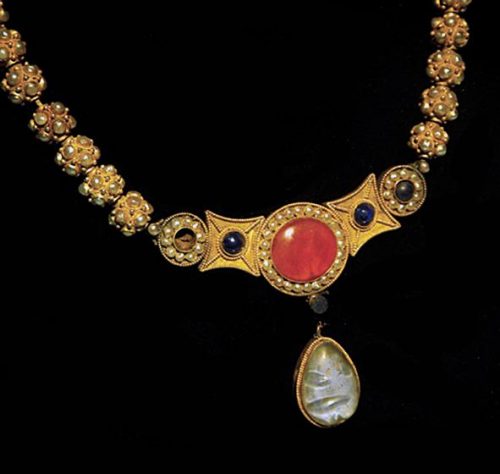
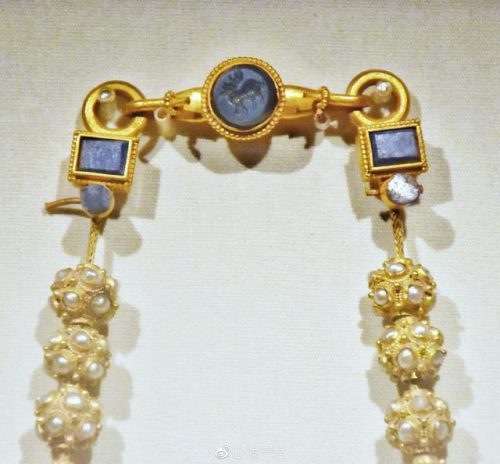
2. https://kknews.cc/other/5lg828k.html

- Foreign Jewelry in Ancient China, VICTOR CUNRUI XIONG and ELLEN JOHNSTON LAING, 1991 https://www.jstor.org/stable/24048294






